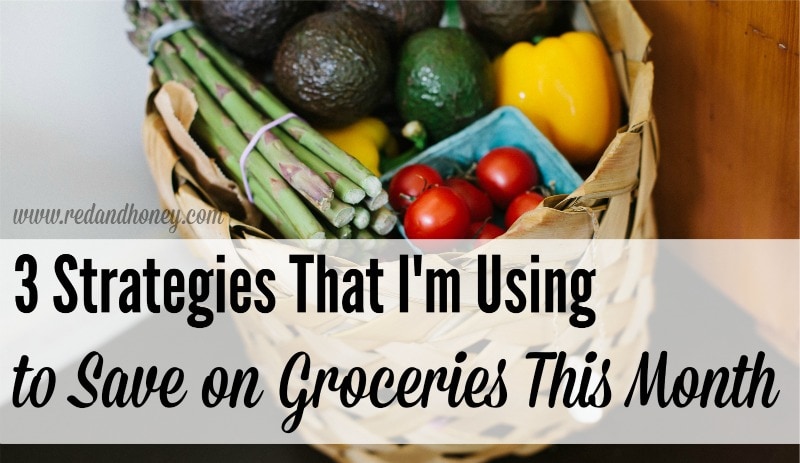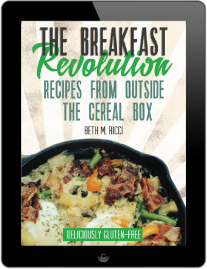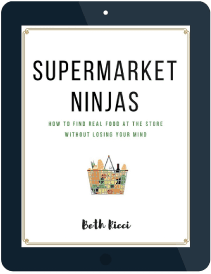
I am no stranger to a tight budget. In fact, you might even say that we are reluctant BFF’s. And you know what? For some reason, it’s always the grocery budget that gives me the most grief.
For me (and most of you reading this blog), it’s not just about filling your cart for insanely low prices with boxed and canned food-like products with your mad coupon skills and 2-for-1 sales. Real food costs more – it’s a sad but true reality.
Ramen noodles and Wonderbread may be cheap, but I just cannot bring myself to sacrifice my nutritional ideals to that level. Besides, I don’t believe that cheap food ends up saving you much in the long term. There are a lot more factors to consider, like the health care costs, a reduced quality of life, and the inevitable affinity for over-priced junk food that doesn’t even satiate. (Sugar: I’m lookin’ at you, punk.)
So what do you do when you’re on a tight budget but still want to serve real, nourishing food to your family? Throw your ideals out the window and just give up because it’s too hard? Nah, that’s the wimpy response.
I used to find myself swinging between splurging too much (organic brands and fancy ingredients and choice cuts of meat at the farm, oh my!) because I’m frustrated and in denial, or buying only the bare bones items (and tsk-tsk’ing myself for not raising my own meat and milking my own cow, never mind that we live smack in the middle of the suburbs), which then usually makes my life so difficult that I wind up eating out because I’m so fed up with trying (unsuccessfully) to find time to make every last little thing from scratch. *cue crazy eyes*.
Neither extreme is very helpful.
It turns out I don’t just need to find the ever-elusive “balance” in my grocery budget spending. I need to wise up and employ some specific strategies that work far better than all the angsty “store-bought/sanity vs. homemade/health??” grocery aisle agonizing in the world.

Lately I’ve felt a little better about our grocery spending, and I have identified three main reasons for that. Here are the three sort of random – yet significant – things I’ve been doing:
1. Menu Planning
Our monthly budget has a line for groceries, and then a (verrrrrry small) line for “entertainment”. It’s usually spent on a single visit to Five Guys in the middle of a day of errands. It’s supposed to cover any eating out that we happen to do (usually a last-minute thing), but if we overspend then I take it from our grocery budget.
So… the first line of defence on keeping my grocery budget in check is to plan ahead better (I wrote about my tips for success as a Type B menu planner here) and eat out less! We are using the online menu planner Plan to Eat, and loving it.
After a year or two of living in survival mode and being very protective against anything that adds to our stress-load, it has become an area of weakness for us to make the convenient, easier choice, instead of the harder, more frugal one. It’s never anything fancy or extravagant, but five bucks here and ten bucks there really add up over a month, so we’re making a strong effort to start changing that.
[Related posts:]
19 Crunchy Compromises I’m Willing to Make During Survival Mode
Let’s Talk About Healthy Living Burnout
2. Strict Bedtime
At first glance, this might seem to have little to do with saving money on groceries. Well believe it or not, it may actually be the single-most relevant thing I’ve done in the last month.
I wrote a few weeks ago to introduce my journey with adrenal fatigue. Now that I’ve begun to put some strategies in place for healing from that, I’ve seen the tip of the iceberg in just how bad my energy levels were. I have gone to bed consistently early for a week, and I’ve cooked and baked from scratch more in the last week than in the last three months combined. It has made that much of a difference for me.

I’ve learned that if I want to succeed with my goal to plan ahead and cook more, and thus eat out less… I have to take care of my health, get my rest, and have the energy to pull it all off. There’s simply no other option.
3. Stretch the Protein & Simple Meals
We are not a Paleo family. We are not even grain-free. We settle more along the lines of WAPF ideals – properly prepared grains (soaking/sprouting/sourdough), fermented foods, properly-raised meats, fresh fruit and veg, etc. But since we don’t like to fill up on lots of store-bought starches or sugary treats, we’ve come to realize that healthy fats and proteins must make up a significant part of our diet.
In order to continue to afford the real-food versions of these things instead of the cheap, industrially-produced kind (ie. vegetable oils and factory-farmed meat), we must choose to stretch them. Meatless meals work well for this, but we prefer minimal-meat meals.
We also almost always choose the cheaper cuts of meat – like whole chickens (from which we can make broth, which drastically multiplies the number of meals we get out of it), and ground beef. Steak is for birthdays, and convenience cuts of chicken are few and far between. Our grocery budget would easily double if we ate roast beef and boneless chicken cuts every night.
By stretching our protein, our meals become simpler. We don’t tend to get fancy with our menu planning, because gourmet recipes typically cost more. Real food doesn’t have to be fancy. Basic and simple are just fine for us, for now.
How do you save money on a real food grocery budget?

This post sponsored by Plan to Eat. Because eating at home should be easier.





















Rachel @ Intentionally Simple
Your strict bedtime applies both to having more energy the next day and can also save money on needless late night snacking! I get so hungry if I stay up too late and end up raiding the fridge for cheese or yogurt! If I go to bed at a decent hour, I don’t eat late night snacks!
I save money by being super careful about food waste. I try to use leftovers up creatively, either by making them into different meals or having a mish-mash leftover night!
Alyssa
We just started using emeals.com about a month ago. I love having the decision making taken out of my hands in terms of what’s for supper, and it comes with a shopping list too, so my husband can shop easily and we both know we have what we need in the house. There is a monthly fee ($5-10/month depending how many months you subscribe for at a time), but it has been worth it in convenience and less food waste.
Congratulations on sticking to a bed time! I’m sure that would help me, but I continually sabotage myself or simply don’t follow through. One thing at a time I guess 🙂
Beth
Glad you’ve figured out a system that works for you! Hopefully you can conquer a consistent bedtime next.
Bethany
I’m digging this post, Beth. I totally need to get on-board with a consistent bedtime, and I’m still feeling out my Plan to Eat groove. Do you share your recipes there by chance? p.s. I, too, am a Type-B, INFP meal planner. The struggle is real.
Beth
Woot! Good to hear from a fellow Type-B, INFP meal planner. There is a way to share recipes on PTE but I haven’t done that yet. I plan to in the future.